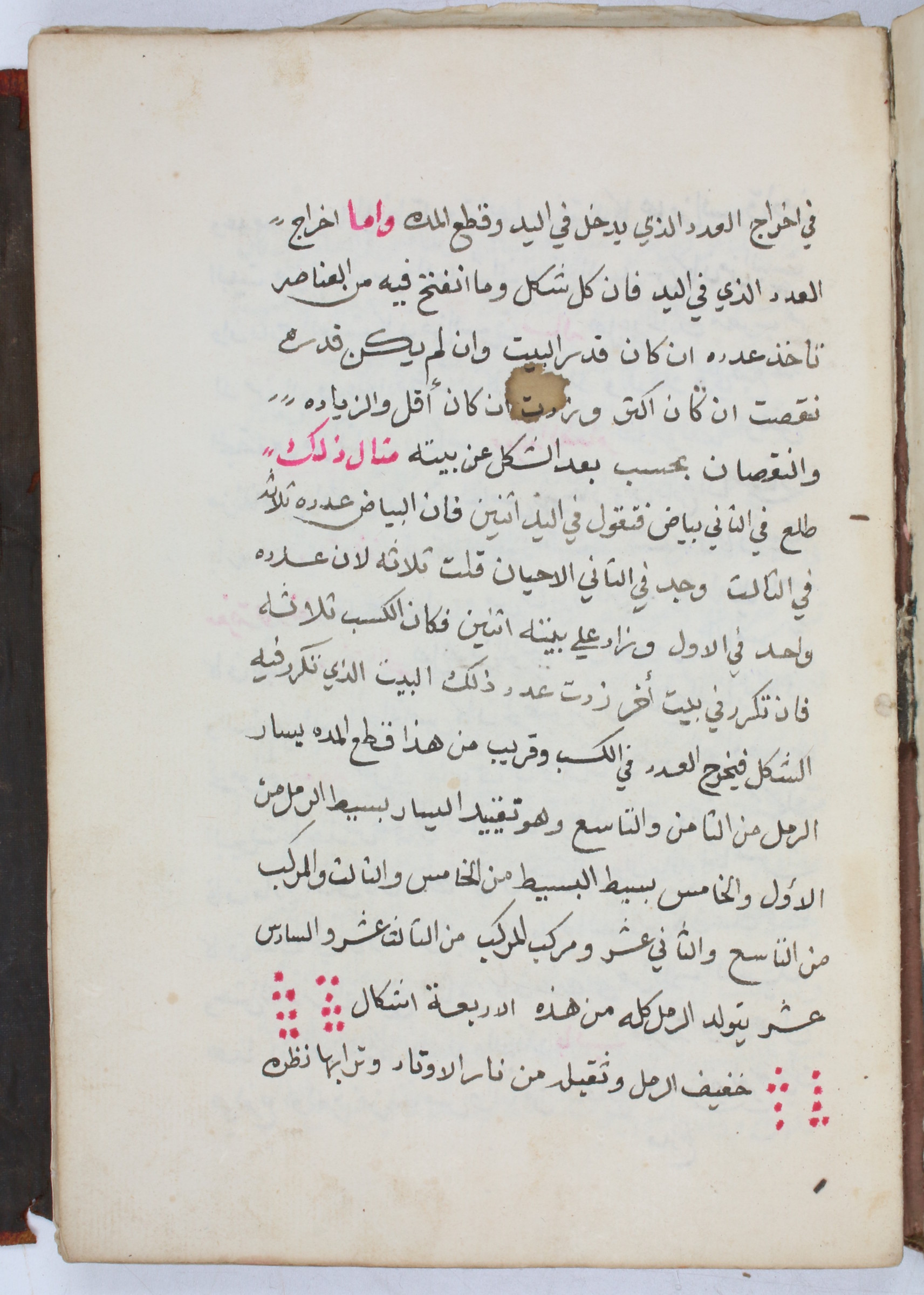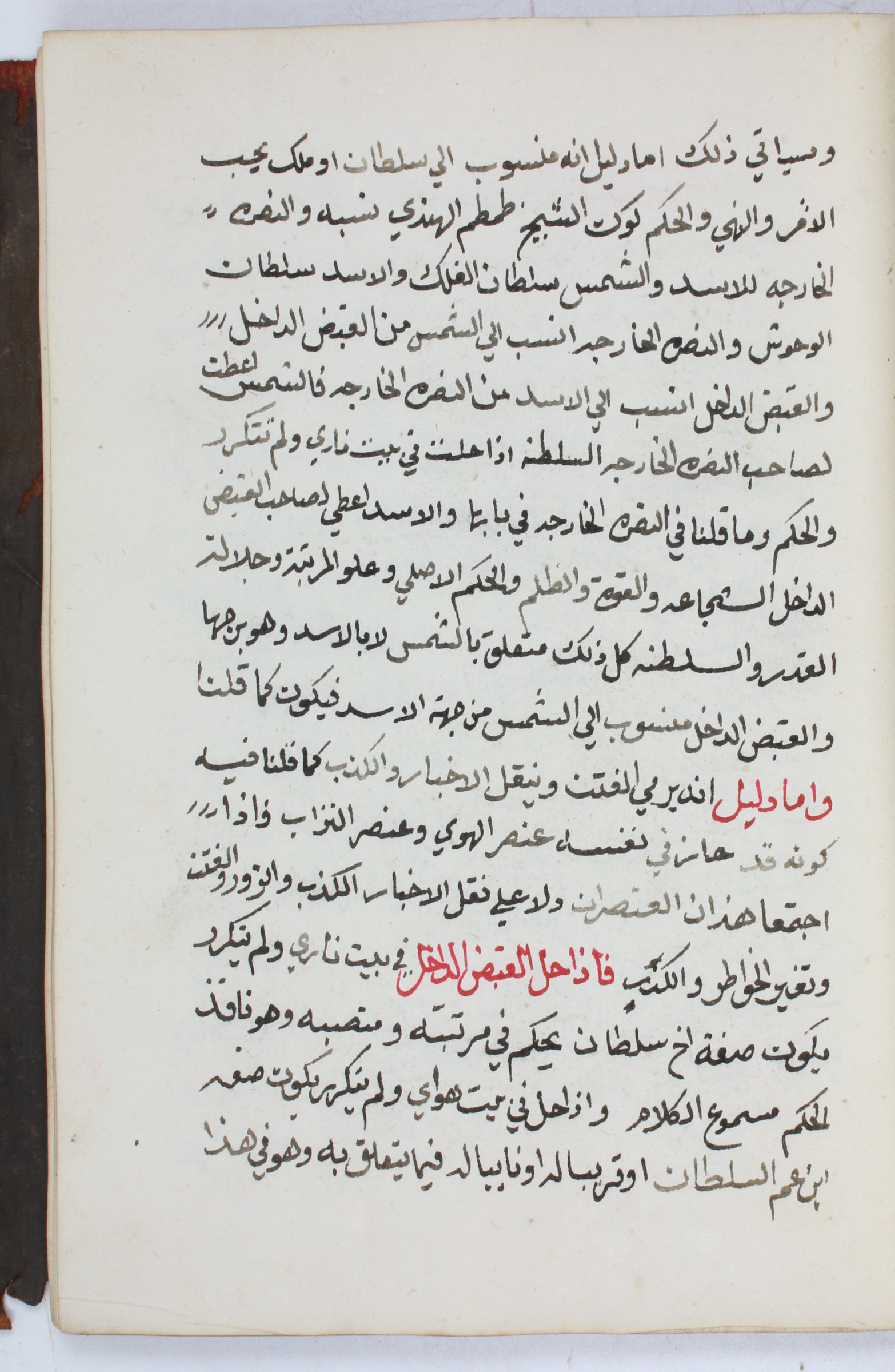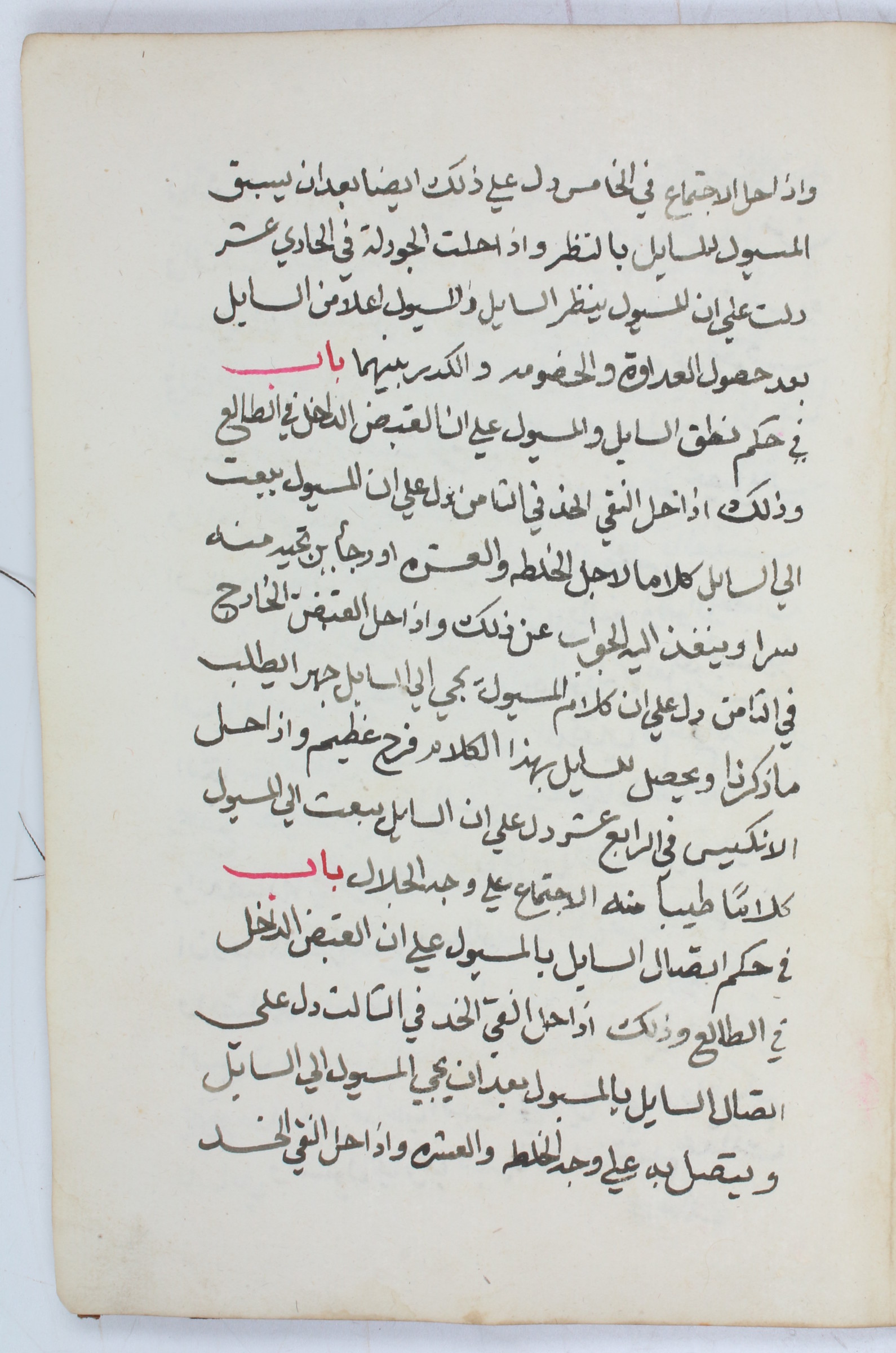The art of sand divination
[Two treatises on the art of 'ilm al-raml].
4to (160 x 226 mm). 77, (1 blank) ff. Arabic manuscript on paper. Black naskh script arranged in 17 lines, with titles and important words picked out in red. With in-text diagrams of geomancy dot arrangements. Contemporary red leather with fore-edge flap, ruled in blind.
A manuscript devoted to the arcane art of 'ilm al-raml, the "science of sand", or sand divination. The Western term geomancy can be traced back to this Arabic origin, being derived from the ancient Greek "geômanteía", itself a translation of the original Arabic "ilm al-raml". As its name suggests, it is the art of foretelling from dots or lines randomly marked upon the ground or on paper. During the late medieval period and the European Renaissance, geomancy entered Europe via North Africa and became quite popular, though during the Renaissance it was occasionally banned alongside other divinations, like palmistry.
The manuscript comprises two treatises, likely by the same author, on ilm al-raml. Included throughout are numerous examples of the sand dots in various arrangements. Each arrangement of dots (created by throwing pebbles in sand, or similar) would have a name and special significance to the practitioner.
Clean, sewing tight; an appealing survival. Provenance: 20th century Parisian private collection, kept in the family for several generations and dispersed in 2022.


















